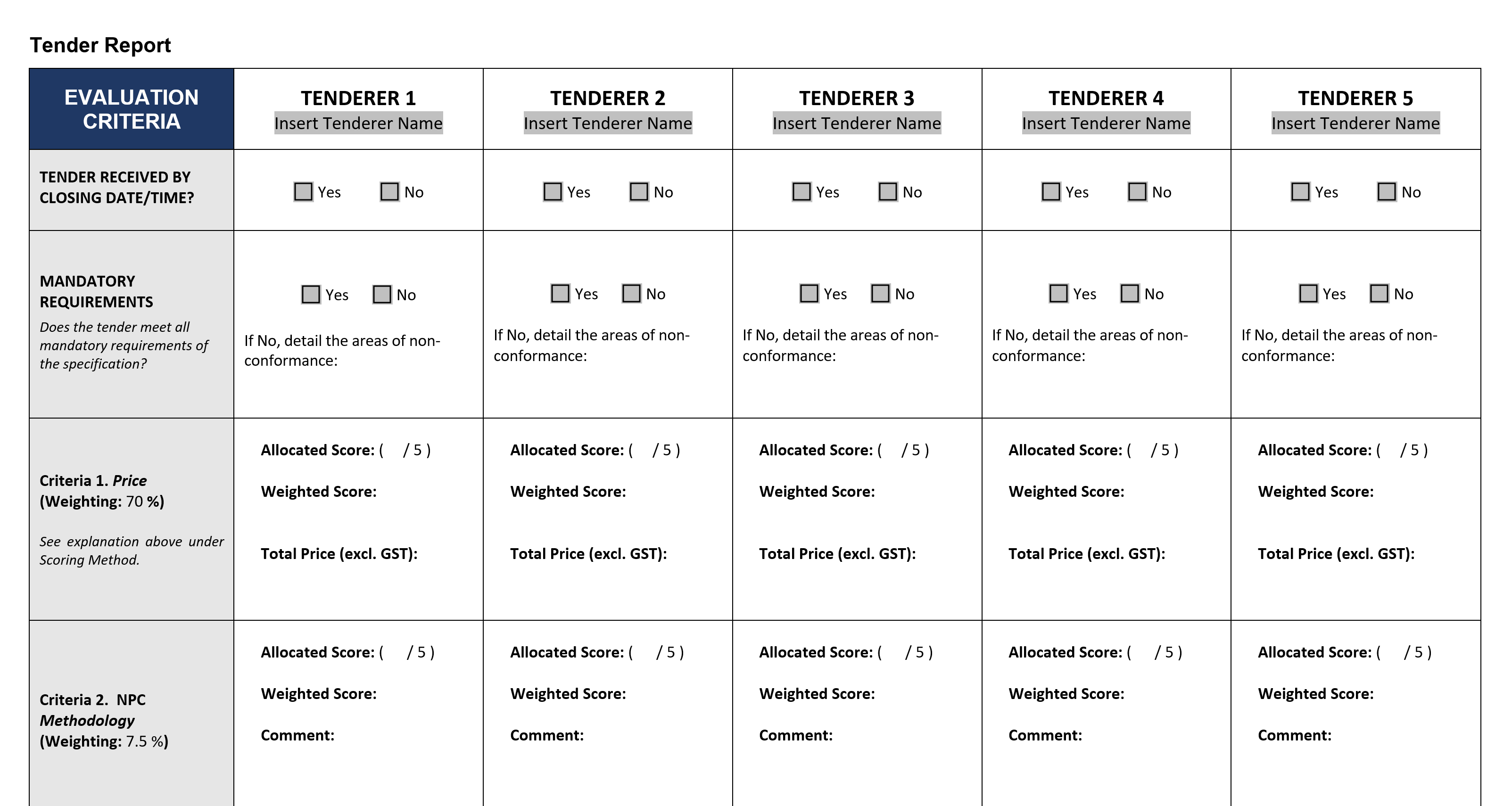Non-compliance vs non-conformance in tendering
Knowing the difference between a non-compliant and non-conforming tender can be make or break for bidding success.
Tenders provide businesses of all sizes with access to various opportunities to sell to the government, but navigating the process can be daunting. In this article we explain the difference between a non-compliant, non-conforming and alternative offer (or alternative tender) and why understanding the language and interpretation of the definitions is important (and what trips people up).
What is a compliant tender?
Understanding the conditions of tendering and the rules you need to follow can save you a lot of time and money. Reading through the wordy tender Specifications is often considered a laborious part of the tender response process, but failure to meet compliance requirements or following the process properly can result in your submission being disqualified as being a non-compliant tender.
When a Request for Tender (RFT) – or Invitation to Tender (ITT) – is released, all respondents are given the same amount of time to prepare and submit their best offers. At the close of the competitive tender period an evaluation panel will initially examine all submissions (referred to as ‘bid submission’) for compliance with the conditions of tender. This is often listed in tender documentation as the mandatory criteria, which are pass or fail criteria but are not generally included in scoring submissions. For example, a compliant tender is one that satisfies the conditions of tender. Tender documentation will include very specific requirements for information in a format that can be compared to other bids. Below is an example of a tender evaluation comparison matrix.

What are some examples of a non-compliant tender?
- Missing the submission deadline
- Exceeding word count
- Failing to complete and execute all of the tender return schedules, and in the format required.
When these conditions are not met, the bid submission can be deemed non-compliant and eliminated from further consideration. In other words, the first step of evaluation is disqualification.
What is a non-conforming tender?
When bid submissions proceed to the next stage of evaluation, they will be assessed against the Specification. For example:
- A statement of conformance to the tender Specification or a list of non-compliances (eg. minimum insurances)
- Verification that the bid submission fully meets the requirements of the goods or services (eg. industry standards that must be adhered to ie. safety or ISO quality standards).
Non-conforming tenders may be set aside from further consideration, but sometimes a non-conforming tender may be considered provided a conforming Tender is also submitted. This is what is usually termed an alternative offer.
What are some examples of non-conformance in tender responses?
- Failure to meet quality requirements and major ISO standards
- Substitute product or service (this could be evaluated as either inferior compared to the stated requirements, or an innovation if presented convincingly – see alternative offer below).
In quality management, non-conformity is a deviation from a specification, a standard, or expectation. In bidding and tendering, a non-conforming tender can also be an alternative offer.
What is an alternative offer (or alternative tender)?
An alternative offer, or alternative solution is where a supplier responds to a tender with a proposed different solution or approach to the Specification.
This is a non-conforming tender, however, it may still be considered and the tender documentation will specify the conditions and requirements for, and any limitations placed on, submission of alternative offers.
Usually, it must be lodged with a complying tender (eg. you might need to submit two bid submissions). If only an alternative offer is lodged then it might be assessed as non-conforming to the conditions of tender.
An alternative offer is a bid for a product or service that delivers improved functionality to the goods or services described in the Specification which could deliver greater value for money outcomes, including advancing sustainability goals.
What are some examples of an alternative offer (or alternative tender)?
- Where a bidder proposes modifications to what has been described in the Specifications which may provide a better way to achieve an outcome. One example might be a call for tenders for petrol vehicles, with an Offer submitted for a more sustainable solution; another example might be a completely new product, technology or methodology you propose to use in an infrastructure project that will greatly reduce environmental impact
- Alternative pricing model (eg. the tender may request a fixed price but a different pricing model could provide greater transparency and save significant money to the customer).
There are many arguments that support alternative offers as this allows innovation in both the process and solutions that can deliver greater value for money or other tangible benefits to taxpayers and stakeholders.
Procurement is opening up for all businesses
The main challenge for procurement is balancing outcomes versus governance to ensure fair and equitable consideration of Offers.
The procurement landscape is evolving. Governments at all levels are taking strong steps to ensure SME, regional, local-sourcing and sustainability criteria are applied to procurement arrangements, and many are standardising contracts for low-risk engagements (for example reducing the minimum levels of insurance). While some bids encourage alternative tenders, others do not. Check the documentation to be sure.
Where an alternative offer is accepted, it must not replace a compliant tender. It must be submitted in addition to a compliant bid so that all bids can be evaluated like-for-like before alternative options are considered.
Whilst it creates more work, don’t dismiss the option to consider putting in an alternative offer if you truly have an innovation or better way of solving a customer problem. This can differentiate you from the competition.
If your organisation is inexperienced in tendering, or routinely leaves everything to the last minute, it is easy to make mistakes that impact the compliance aspects of your bid submission rendering your submission being non-admissible for evaluation. Bidding should be treated as an investment in time and resources, not a last minute scramble to throw your hat in the ring. It is therefore essential to understand how to deal with compliance issues in the tender. Read all of the documentation, take notice of the procedural rules and conditions of contract (handy tip: keep a checklist of all of the ”must have”, “should have” clauses).
Keeping a compliance matrix and using it as a working and review checklist is an efficient way to ensure you meet all of the compliance requirements.
If you’re prepared to do what is required to meet tender process requirements, can follow instructions and think you are a good fit to become a government supplier, then you can respond to a tender.
Looking for more help to understand how to improve your tender compliance? Here’s another article that may interest you.
5 Tips to Avoid a Non-Compliant Tender


